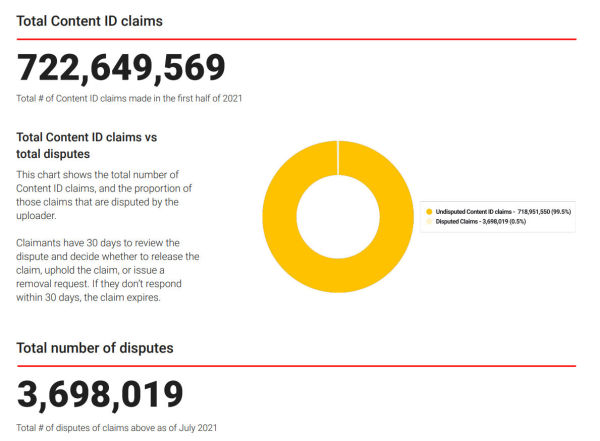For the first time, Google has published precise figures on the copyright complaints received on YouTube. The "Copyright Transparency Report" covers the period from January to July 2021 and provides information about the various tools available to rights holders to prevent unauthorized use of their images or music, including a breakdown of how often they were used in each case and whether this was done legally.

According to the report, 99% of all copyright claims are filed through the automated Content ID system - the technology that constantly scans YouTube content and matches it against a database of clips and songs that have been filed as "protected". If there is a hit, the video in question is immediately flagged and a so-called claim is triggered. Over 9000 partners such as film studios or music labels have access to this system.
In total, over 722 million copyright claims were triggered via Content ID in the six-month period - almost all of them obviously legitimate, as appeals were lodged in less than 1% of cases. This is because anyone who receives one of the dreaded e-mails with the subject "A copyright claim was created for content in ..." can dispute the claim if the offending content is used with permission, or if - as is often the case - the content in question is not protected at all, for example because it is music under a Creative Commons license. In around 60% of cases, the objection resulted in the claim being withdrawn as a result.

Other copyright tools offered by YouTube include a relatively automated "copyright match," for which about 2 million channels qualify, and the option to take action against videos on the platform via a web form, or more precisely, two forms, one general and one for companies. According to the report, the public copyright form has the highest abuse rate of all tools - about 8% of the requests submitted via it to delete a video due to copyright infringement were classified by Google as incorrect and partly abusive, for example to have videos of a competitor removed.
For those who want to browse the YouTube Copyright Transparency Report for themselves,  download it here.
download it here.

